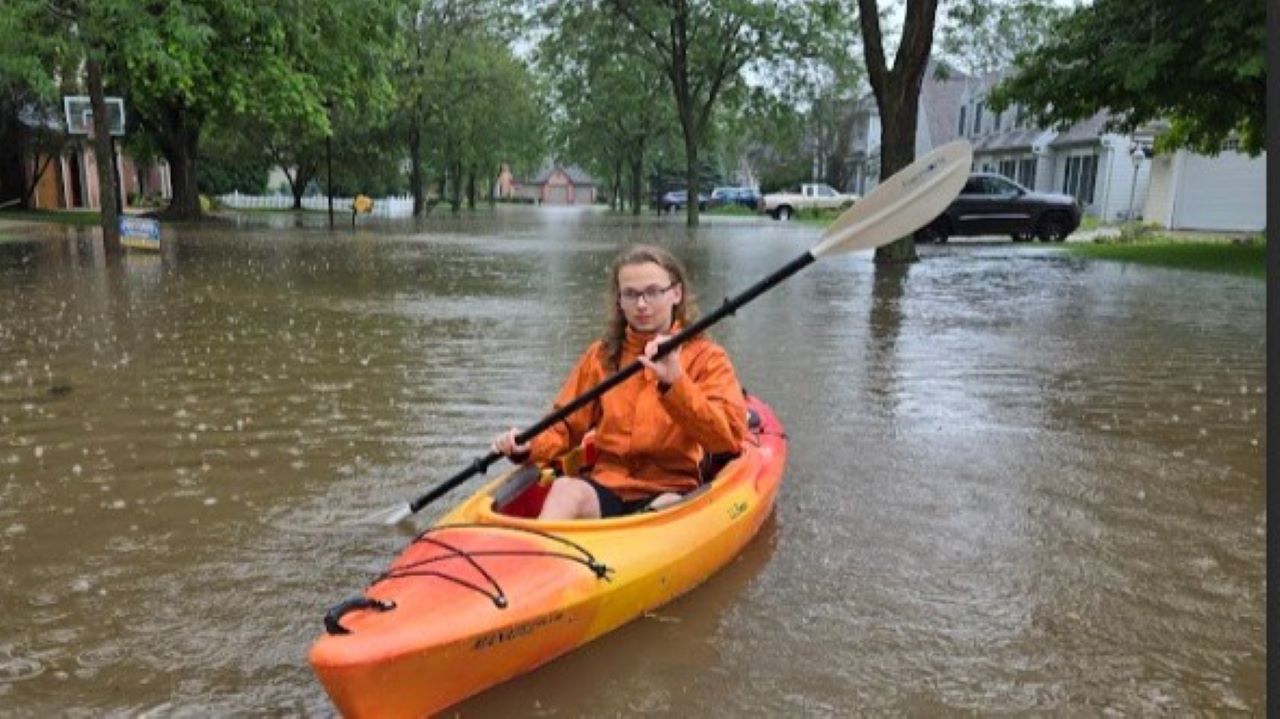Flash Flood Impacts and Consequences

Flash flood warning – Flash floods are characterized by their sudden onset and rapid rise, which can lead to devastating consequences for communities and infrastructure. These floods can cause widespread damage, including loss of life, displacement of residents, and damage to property and infrastructure.
If the rain keep fall no stop and the water level rise too fast, we better run and find higher ground. But don’t forget to save your money and put it in the bank, because in money in the bank 2024 you can earn big interest.
And when the flood water recede, you can use that money to buy a new house and car.
The human toll of flash floods can be significant. In some cases, these floods can lead to loss of life, as individuals may be caught off guard by the rapidly rising waters. Additionally, flash floods can lead to displacement of residents, as their homes may be damaged or destroyed by the floodwaters.
Yu raed dis flash flood warning now, den go watch brazil vs uruguay later. Heavy rain may cause flash flood. Yu stay safe and dry. Den go watch di game. Yu no waan miss di action.
Damage to Property and Infrastructure
Flash floods can also cause extensive damage to property and infrastructure. The rapidly flowing waters can damage buildings, bridges, and roads, and can also lead to power outages and disruptions to water and sewer service. In some cases, flash floods can also lead to landslides, which can further damage property and infrastructure.
Flash Flood Preparedness and Mitigation: Flash Flood Warning

Flash floods pose significant threats to communities, but proactive measures can help mitigate risks and protect lives. Preparedness and mitigation strategies encompass evacuation plans, emergency supplies, structural and non-structural measures, and community education.
Evacuation Plans and Emergency Supplies
Develop comprehensive evacuation plans that identify safe routes and evacuation centers. Prepare emergency kits containing essential items such as food, water, first aid supplies, medications, and important documents. Ensure family members are aware of the plan and designated meeting points.
Structural and Non-Structural Measures
Structural measures, such as floodwalls and levees, provide physical barriers against floodwaters. Non-structural measures, like flood warning systems, land use planning, and flood insurance, help reduce flood vulnerability and promote resilience.
Community Education and Awareness, Flash flood warning
Educating communities about flash flood risks is crucial for reducing vulnerability. Public outreach campaigns, community workshops, and school programs can raise awareness, promote preparedness, and foster a culture of flood safety.
Flash Flood Forecasting and Warning Systems

Flash flood forecasting systems use a combination of weather data, radar imagery, and computer models to predict the likelihood and severity of flash floods. These systems monitor rainfall intensity, streamflow levels, and soil moisture to identify areas at risk. However, these systems have limitations, such as the difficulty in predicting the exact timing and location of flash floods and the challenges in forecasting floods caused by small-scale or localized rainfall events.
Types of Flash Flood Warnings
Flash flood warnings are issued by weather agencies to alert the public about potential or imminent flash floods. These warnings vary in their severity and include:
– Flash Flood Watch: Indicates that conditions are favorable for flash flooding to occur within the next 12 to 24 hours.
– Flash Flood Warning: Indicates that flash flooding is imminent or already occurring.
Challenges of Communicating Flash Flood Warnings
Communicating flash flood warnings to the public and ensuring timely response can be challenging due to:
– Time Sensitivity: Flash floods can develop rapidly, leaving little time for warnings to be disseminated and acted upon.
– Public Perception: People may not be aware of the risks associated with flash floods or may underestimate their severity.
– Limited Access to Information: Not everyone has access to real-time weather information or may not receive warnings in a timely manner.